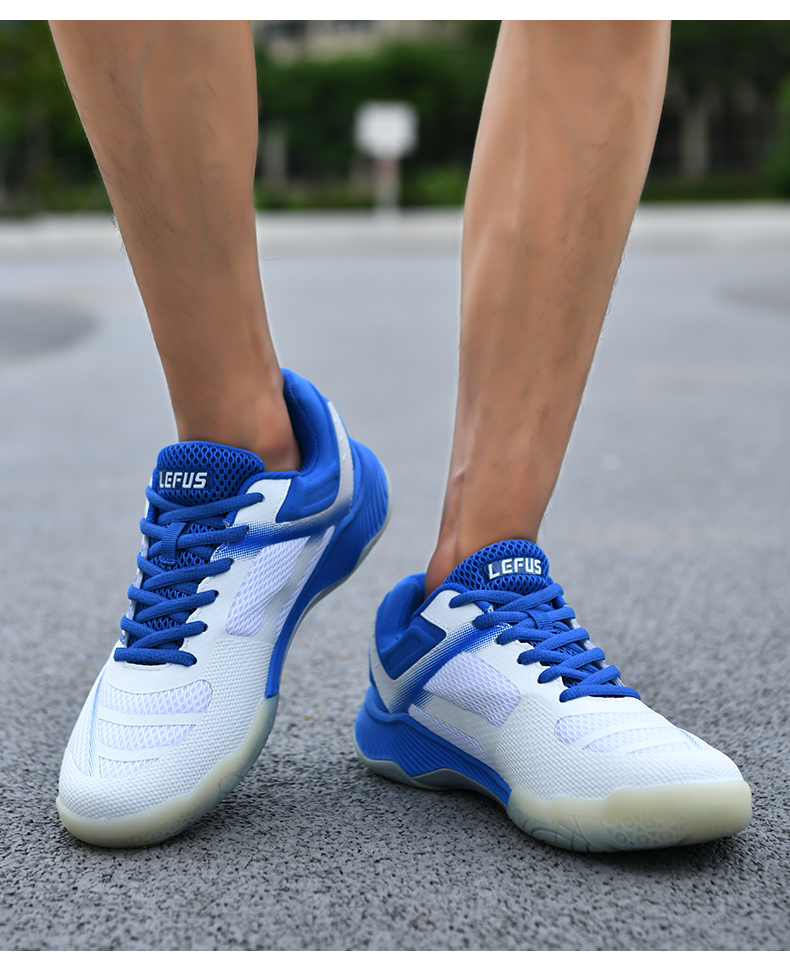
When it comes to playing pickleball, having the right shoes with proper grip and traction is essential. Pickleball is a fast-paced game that requires quick movements, sudden stops, and rapid changes in direction. Without proper grip, players risk slipping and sliding on the court, which can lead to injuries and hinder performance. In this article, we will explore the importance of grip in pickleball shoes and discuss the factors that contribute to optimal traction for quick movements on the court.
The Role of Grip in Pickleball
Grip refers to the shoe’s ability to maintain traction and prevent slipping on various court surfaces. In pickleball, where split-second reactions and swift movements are crucial, grip plays a fundamental role. Here’s why grip is so important:
- Quick Direction Changes: Pickleball requires players to make rapid direction changes, including lateral movements, pivots, and quick sprints. A shoe with good grip provides traction that allows players to move confidently and efficiently without losing balance or stability.
- Stability and Balance: Maintaining stability and balance is vital in pickleball to execute shots accurately and avoid injuries. Grip ensures that players can plant their feet firmly on the ground during shots, enabling better control and reducing the risk of slipping.
- Injury Prevention: Slipping and sliding on the court can lead to injuries such as sprained ankles, pulled muscles, or even falls. A shoe with proper grip helps prevent these accidents by providing the necessary traction to maneuver safely on the court.
Factors Affecting Grip in Pickleball Shoes
Several factors contribute to the grip and traction provided by pickleball shoes. Let’s take a closer look at each of them:
- Outsole Material: The material used in the outsole of the shoe plays a significant role in grip. Most pickleball shoes feature rubber outsoles, as rubber offers excellent traction on both indoor and outdoor courts. Look for shoes with high-quality rubber compounds designed to provide optimal grip on various surfaces.
- Tread Pattern: The tread pattern on the outsole greatly affects the shoe’s grip. Different tread patterns offer varying levels of traction on different court surfaces. Some common tread patterns for pickleball shoes include herringbone, hexagonal, or multidirectional patterns. These patterns create friction and help grip the court, allowing for quick movements without slipping.
- Outsole Thickness: The thickness of the outsole can impact grip. A thicker outsole provides more rubber contact with the court surface, enhancing traction. However, it’s essential to find a balance, as an excessively thick outsole can compromise flexibility and court feel.
- Court Surface: The type of court surface you play on also influences the grip required from your shoes. Indoor pickleball courts, such as wood or laminate, typically require shoes with softer rubber and a herringbone tread pattern for optimal grip. Outdoor courts, such as concrete or asphalt, demand shoes with more durable rubber compounds and aggressive tread patterns to provide grip on rougher surfaces.
Choosing the Right Pickleball Shoes for Grip
When selecting pickleball shoes for optimal grip, it’s crucial to consider the following factors:
- Court Surface: Determine whether you primarily play on indoor or outdoor courts. If you play indoors, look for shoes specifically designed for indoor court use, with gum rubber soles and herringbone tread patterns. For outdoor play, choose shoes with more durable rubber and aggressive tread patterns to handle different outdoor surfaces.
- Tread Pattern: Consider the specific tread pattern that suits your playing style and court surface. Herringbone patterns are popular for indoor play, providing excellent grip and quick lateral movements. Outdoor shoes may feature multidirectional or hexagonal patterns for enhanced grip on various outdoor terrains.
- Fit and Comfort: Grip is only effective if the shoe fits properly and offers comfort during play. A shoe that is too loose or too tight can affect stability and balance. Ensure your pickleball shoes fit snugly, with ample room for your toes to move, to maintain control and minimize the risk of slipping.
-
Weight and Flexibility: The weight and flexibility of pickleball shoes can impact grip and overall performance. Lightweight and flexible shoes allow for quick movements and better court feel. However, striking the right balance is essential, as overly lightweight shoes may sacrifice stability and durability.
Maintaining Grip in Pickleball Shoes
To ensure that your pickleball shoes maintain their grip and traction over time, proper maintenance is crucial. Here are some tips to help you keep your shoes in optimal condition:
-
Clean Regularly: Remove any dirt or debris from your shoes after each play session. This can be done by gently brushing off the dirt or using a damp cloth. Avoid using harsh chemicals or abrasive brushes that can damage the outsole.
-
Dry Thoroughly: After playing on wet surfaces or in damp conditions, allow your shoes to dry naturally. Avoid using direct heat sources or placing them in the sun, as excessive heat can damage the materials.